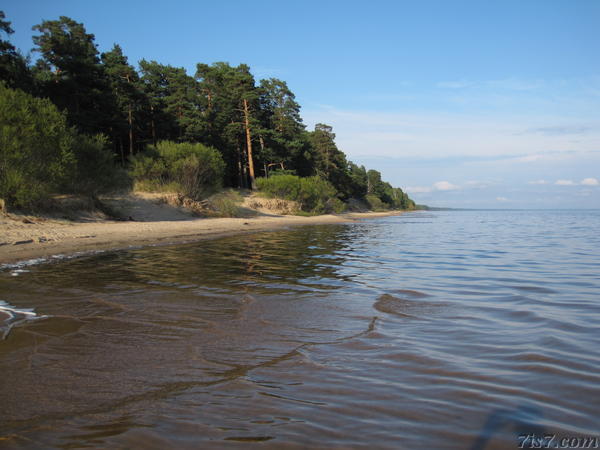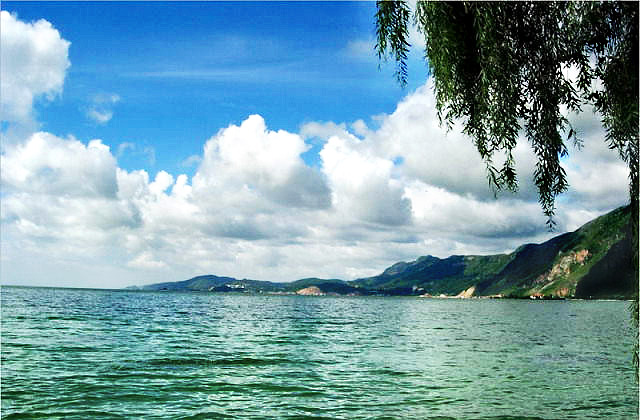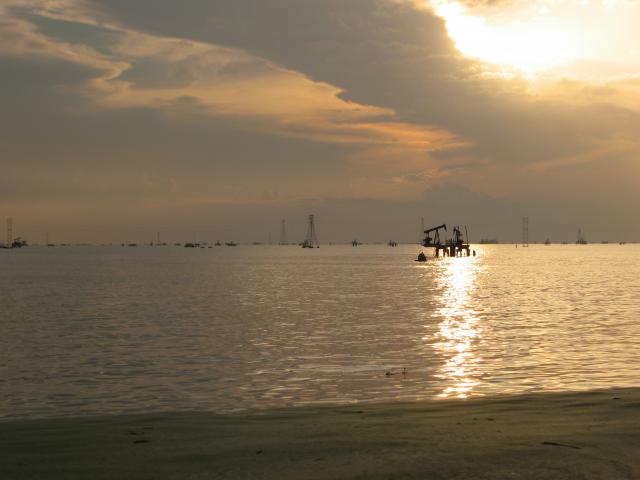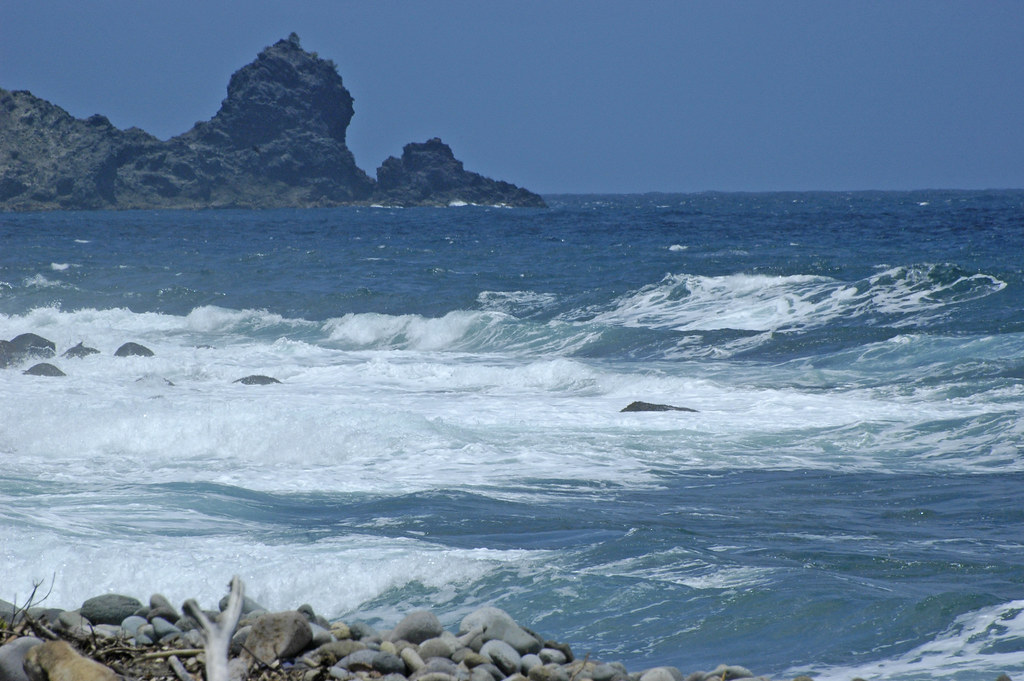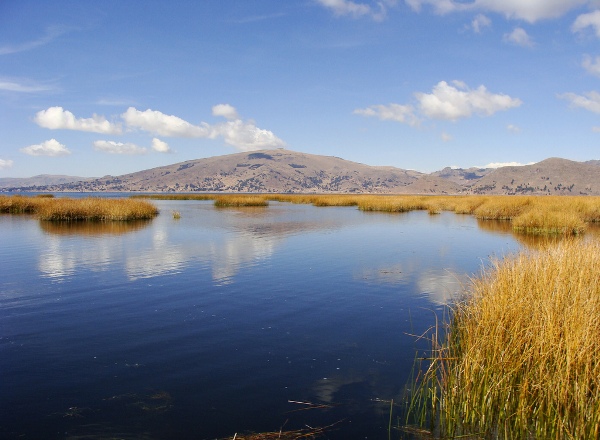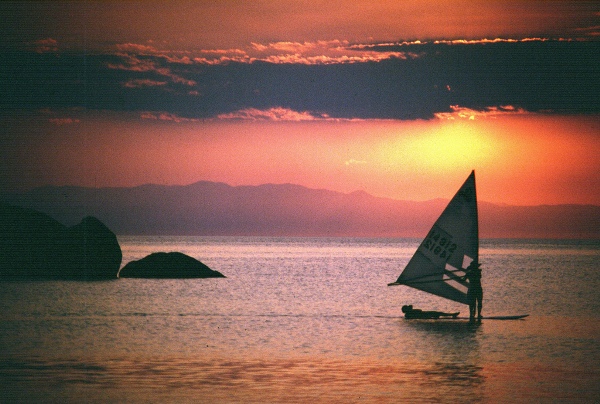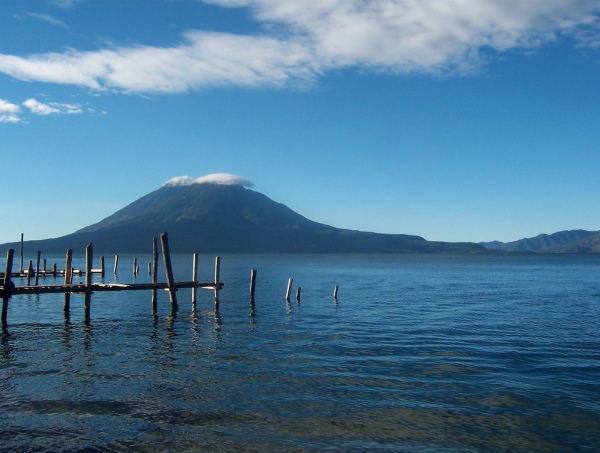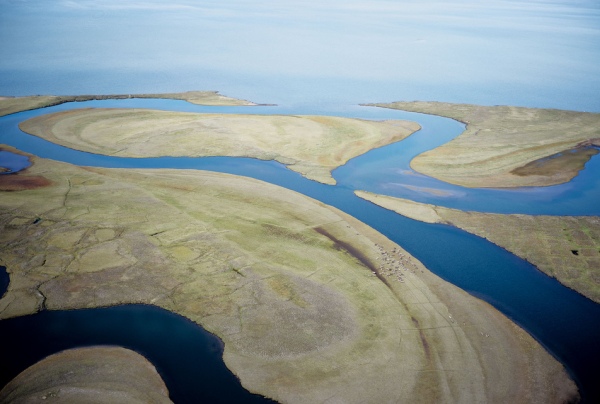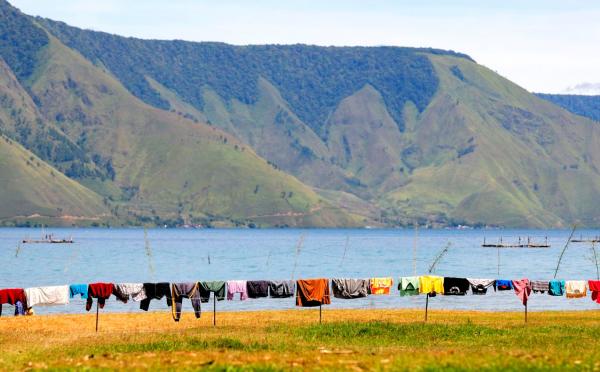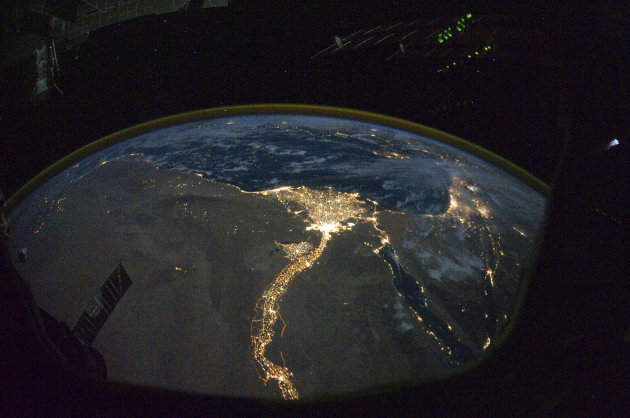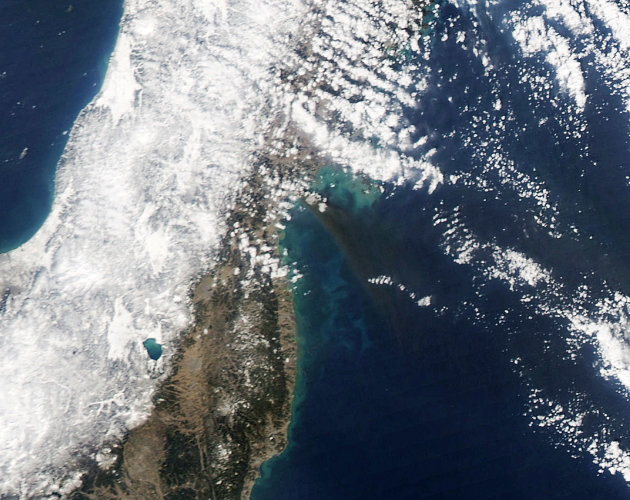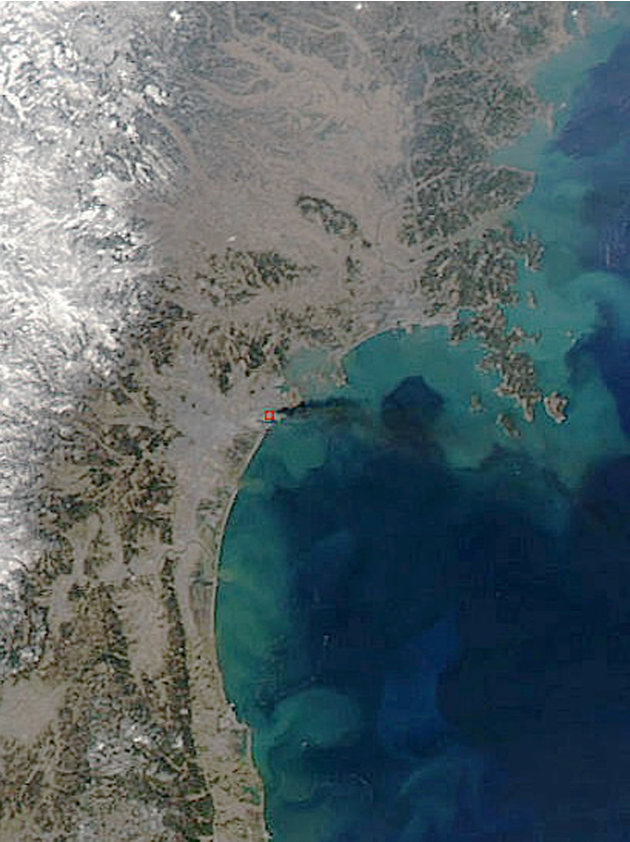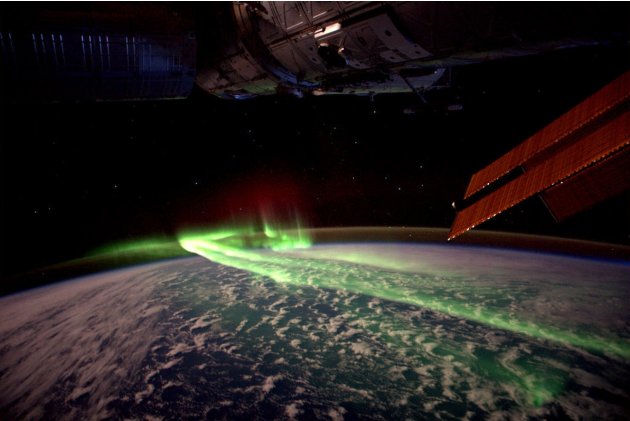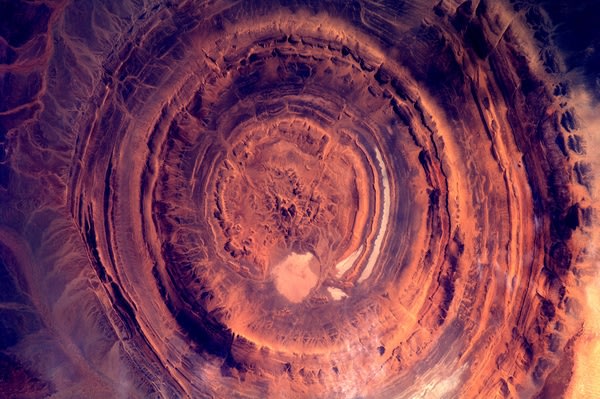Mikroba menjadi kehidupan yang terakhir bertahan di Bumi.
Jum'at, 21 Desember 2012, 15:29

VIVAnews - Sebuah penelitian baru dilakukan untuk mengetahui bentuk kehidupan terakhir di Bumi sebelum kiamat. Ilmuwan pun berusaha mencari tahu apa yang akan terjadi di Bumi, juga jenis tempat tinggal seperti apa yang akan bertahan sebelum Bumi kiamat.
Diperkirakan, dalam waktu sekitar satu miliar tahun ke depan, kondisi dunia dipengaruhi oleh sinar Matahari yang secara bertahap akan meningkat. Dampaknya juga akan terasa di Bumi.
Suhu permukaan akan naik tanpa henti selama beberapa miliar tahun ke depan, dan akan meningkatkan jumlah uap air di udara. Hal ini juga akan meningkatkan suhu, dengan demikian, akan menandai awal berakhirnya kehidupan di Bumi.
Peningkatan suhu akan menyebabkan jumlah hujan dan angin berlebihan. Kondisi ini dapat meningkatkan pelapukan batuan silikat, yang akan menyedot karbon tambahan dari atmosfer.
Biasanya, karbon tersebut digantikan melalui lempeng tektonik dalam siklus karbon-silikat, seperti yang ditemukan dalam gas vulkanik. Namun, lautan akan mulai menguap, karena suhu terus meningkat, yang mungkin menghentikan lempeng tektonik.
Ilmuwan meyakini bahwa air merupakan pelumas penting bagi gerakan lempeng tektonik di Bumi. Hal ini akan menguras jumlah gunung berapi yang aktif, dan karbon tidak akan terisi ulang di atmosfer.
Kurangnya karbondioksida secara efektif akan menghambat kehidupan tanaman di Bumi. Karena, tanaman membutuhkan CO2 untuk pernapasan mereka. Kematian tanaman yang memproduksi oksigen pada akhirnya akan menyebabkan kurang oksigen di atmosfer selama beberapa juta tahun.
Ini tentu saja berarti bencana bagi kehidupan hewan yang tersisa di Bumi. Mamalia dan burung diperkirakan menjadi kelompok makhluk pertama yang punah.
Selanjutnya ikan, amfibi, dan reptil akan bertahan sedikit lebih lama. Ini disebabkan mereka membutuhkan oksigen lebih sedikit dan memiliki penyesuaian yang lebih besar terhadap panas.
Jenis terakhir binatang yang hidup di Bumi kemungkinan adalah invertebrata. Setelah serangga akhirnya menyerah pada suhu yang meningkat, Bumi hanya akan dihuni oleh kehidupan mikroba. Sementara itu, kehidupan terakhir yang tersisa di Bumi akan mencari bagian planet yang masih layak huni.
Tapi, organisme yang hidup di wilayah ekstrem (extremophile) juga menghadapi tantangan.
Tempat potensial
Karena lautan menguap, praktis hanya kolam-kolam yang masih memiliki air yang dapat memberikan perlindungan terakhir untuk beberapa mikroba.
Parit di dasar laut diperkirakan bisa menjadi salah satu tempat terakhir untuk air atau zat cair. Namun, ini tidak mudah, karena udara yang bergerak ke parit akan dikompresi setelah tenggelam lebih rendah. Tekanan ini akan sangat meningkatkan suhu udara di atas air.
"Pada saat kita sampai ke titik di mana ada parit dengan kolam kecil air di bagian bawah, air laut dalam massa besar akan menguap, sehingga suhu permukaan di planet ini akan meningkat pesat," kata Jack O'Malley-James, penulis utama studi dari University of St Andrews.
"Oleh karena itu, air di dasar palung tidak akan bertahan dalam suhu yang lebih dingin untuk jangka waktu lebih lama, untuk membuat perlindungan yang baik bagi kehidupan," tambahnya.
Tempat potensial lain bagi kehidupan mikroba terakhir yaitu gua-gua bawah tanah. Apalagi, mikroba telah ditemukan hidup di gua-gua Bumi masa kini tanpa memerlukan sinar Matahari. Gua yang paling dalam di Bumi di masa mendatang tidak akan cocok untuk kehidupan, karena suhu meningkat sangat tajam hingga ke dalam.
Karena lautan menguap, praktis hanya kolam-kolam yang masih memiliki air yang dapat memberikan perlindungan terakhir untuk beberapa mikroba.
Parit di dasar laut diperkirakan bisa menjadi salah satu tempat terakhir untuk air atau zat cair. Namun, ini tidak mudah, karena udara yang bergerak ke parit akan dikompresi setelah tenggelam lebih rendah. Tekanan ini akan sangat meningkatkan suhu udara di atas air.
"Pada saat kita sampai ke titik di mana ada parit dengan kolam kecil air di bagian bawah, air laut dalam massa besar akan menguap, sehingga suhu permukaan di planet ini akan meningkat pesat," kata Jack O'Malley-James, penulis utama studi dari University of St Andrews.
"Oleh karena itu, air di dasar palung tidak akan bertahan dalam suhu yang lebih dingin untuk jangka waktu lebih lama, untuk membuat perlindungan yang baik bagi kehidupan," tambahnya.
Tempat potensial lain bagi kehidupan mikroba terakhir yaitu gua-gua bawah tanah. Apalagi, mikroba telah ditemukan hidup di gua-gua Bumi masa kini tanpa memerlukan sinar Matahari. Gua yang paling dalam di Bumi di masa mendatang tidak akan cocok untuk kehidupan, karena suhu meningkat sangat tajam hingga ke dalam.
Namun, gua yang memiliki ruangan besar di bawah pintu masuk yang sempit mungkin lebih dingin. Karena, udara dingin akan tersedot, dan udara hangat keluar.
Gua tersebut terbentuk dari tabung lava yang runtuh, dan udara dingin di gua-gua akan menyebabkan salju jatuh selama musim dingin, serta membekukan air masuk. Ketika suhu di luar naik lagi, udara dingin masih terperangkap di dalam gua bersama dengan es.
Potensi tempat kehidupan juga memungkinkan ada di lingkungan bawah permukaan bumi, selain gua es. Ini dibuktikan dengan ditemukannya kehidupan pada kedalaman 5,3 kilometer di bawah permukaan Bumi. Peningkatan temperatur di kedalaman sekitar 48 derajat celcius per 1,6 km, namun, kenaikan yang tepat tergantung pada jenis batuan.
Gua tersebut terbentuk dari tabung lava yang runtuh, dan udara dingin di gua-gua akan menyebabkan salju jatuh selama musim dingin, serta membekukan air masuk. Ketika suhu di luar naik lagi, udara dingin masih terperangkap di dalam gua bersama dengan es.
Potensi tempat kehidupan juga memungkinkan ada di lingkungan bawah permukaan bumi, selain gua es. Ini dibuktikan dengan ditemukannya kehidupan pada kedalaman 5,3 kilometer di bawah permukaan Bumi. Peningkatan temperatur di kedalaman sekitar 48 derajat celcius per 1,6 km, namun, kenaikan yang tepat tergantung pada jenis batuan.
Perlindungan di bawah permukaan Bumi seperti ini tentu dapat menjadi salah satu tempat terakhir yang memiliki kehidupan.
Di akhir siklus, suhu akan menurun sekitar 10,5 derajat Celsius per mil di atas permukaan bumi. Hal ini karena permukaan Bumi kembali memancarkan panas yang telah diterima dari Matahari, sehingga memanaskan atmosfer yang lebih rendah.
Suhu yang lebih rendah pada ketinggian tinggi akan mendorong kehidupan mikroba di Bumi di masa depan mencari perlindungan di danau yang tersisa di pegunungan. Ini dilakukan untuk menghindari panas.
Di akhir siklus, suhu akan menurun sekitar 10,5 derajat Celsius per mil di atas permukaan bumi. Hal ini karena permukaan Bumi kembali memancarkan panas yang telah diterima dari Matahari, sehingga memanaskan atmosfer yang lebih rendah.
Suhu yang lebih rendah pada ketinggian tinggi akan mendorong kehidupan mikroba di Bumi di masa depan mencari perlindungan di danau yang tersisa di pegunungan. Ini dilakukan untuk menghindari panas.
Ini karena lempeng tektonik berhenti menabrak satu sama lain, dan tidak akan ada lagi menjadi kekuatan untuk menghasilkan pegunungan yang menjulang ke atas.
Sebaliknya, gunung-gunung akan menyerah terhadap cuaca dan akhirnya daerah dataran tinggi yang ada akan menjadi lebih sedikit.
Daerah dataran tinggi yang tersisa kemungkinan adalah gunung berapi. Kurangnya lempeng tektonik akan memungkinkan "hot spot" gunung berapi ini mencapai ketinggian yang tidak mungkin ada untuk saat ini.
"Lokasi sekitar gunung berapi aktif di Bumi saat ini merupakan pusat kehidupan. Sehingga tinggal dekat gunung berapi aktif tidak akan menjadi kendala bagi mikroorganisme ekstrem," kata O'Malley-James.
"Kemungkinan aktivitas gunung berapi akan menurun, karena planet mendingin. Tetapi, tidak mungkin berhenti total selama periode waktu di mana planet masih dihuni," sebutnya.
Kolam terisolasi dari sisa-sisa laut akan memiliki konsentrasi garam tinggi, yang hanya dapat dihuni oleh mikroba tertentu. Mikroba tersebut disebut thermohalophiles, dan mereka ada saat ini dalam kondisi seperti di sekitar ventilasi hidrotermal.
Daerah dataran tinggi yang tersisa kemungkinan adalah gunung berapi. Kurangnya lempeng tektonik akan memungkinkan "hot spot" gunung berapi ini mencapai ketinggian yang tidak mungkin ada untuk saat ini.
"Lokasi sekitar gunung berapi aktif di Bumi saat ini merupakan pusat kehidupan. Sehingga tinggal dekat gunung berapi aktif tidak akan menjadi kendala bagi mikroorganisme ekstrem," kata O'Malley-James.
"Kemungkinan aktivitas gunung berapi akan menurun, karena planet mendingin. Tetapi, tidak mungkin berhenti total selama periode waktu di mana planet masih dihuni," sebutnya.
Kolam terisolasi dari sisa-sisa laut akan memiliki konsentrasi garam tinggi, yang hanya dapat dihuni oleh mikroba tertentu. Mikroba tersebut disebut thermohalophiles, dan mereka ada saat ini dalam kondisi seperti di sekitar ventilasi hidrotermal.
Mikroba di bumi di masa depan juga harus bersaing dengan serangan dosis tinggi radiasi ultraviolet. Ini diakibatkan lapisan ozon telah terbuka saat oksigen di atmosfer berkurang.
Bio-signature
Bio-signature
Mempelajari periode akhir kehidupan di Bumi membantu ilmuwan untuk mempersempit jenis bio-signature --zat yang menunjukkan kehidupan-- yang mungkin ada di bumi.
Thermohalophiles, seperti yang ditemukan di gunung berapi di Chili Atacama Desert, menggunakan karbonmonoksida untuk memperoleh energi, dan hasil sampingan dari proses metabolisme organisme ini termasuk karbondioksida, hidrogen, dan etanol.
Karbondioksida dapat dilihat sebagai indikator kehidupan, mengingat senyawa ini melekat pada planet yang telah hilang beberapa juta tahun sebelumnya. Karbondioksida dengan sendirinya bukan bio-signature. Karena itu, kehadirannya di Mars tidak menunjukkan bahwa ada kehidupan di planet merah tersebut.
Namun, secara biologi karbondioksida yang dihasilkan akan menyebabkan ketidakseimbangan dari CO2 di atmosfer. Ini dapat mengungkapkan adanya kehidupan mikroba.
Demikian pula, produksi biologis hidrogen oleh thermohalophiles bisa menciptakan kelebihan hidrogen di atmosfer, yang dapat digunakan sebagai indikator kehidupan. Namun, semua biosignature kemungkinan akan menjadi lemah, karena produktivitas biologi akan sangat berkurang di dunia yang semakin sekarat.
Mikroba dapat beradaptasi dengan kondisi ekstrem, dan mikroba akan menjadi penghuni tunggal bumi selama di masa terakhir planet ini layak dihuni. Ekosistem kehidupan mikroba akan menunjukkan biosignature yang
sangat berbeda dengan apa yang ada di Bumi saat ini.
Tapi, apakah jenis terakhir ekosistem kehidupan akan muncul mirip dengan jenis ekosistem kehidupan awal? Itu adalah pertanyaan lain.
Pekerjaan di masa depan akan berusaha untuk mencari dan mengembangkan apa yang bisa dilakukan dengan penemuan biosignature. Untuk selanjutnya, mencari sebuah planet layak huni di antara planet mirip Bumi yang telah ditemukan sejauh ini.
Makalah tentang periode akhir di Bumi ini telah dipublikasikan dalam "International Journal of Astrobiology".
Thermohalophiles, seperti yang ditemukan di gunung berapi di Chili Atacama Desert, menggunakan karbonmonoksida untuk memperoleh energi, dan hasil sampingan dari proses metabolisme organisme ini termasuk karbondioksida, hidrogen, dan etanol.
Karbondioksida dapat dilihat sebagai indikator kehidupan, mengingat senyawa ini melekat pada planet yang telah hilang beberapa juta tahun sebelumnya. Karbondioksida dengan sendirinya bukan bio-signature. Karena itu, kehadirannya di Mars tidak menunjukkan bahwa ada kehidupan di planet merah tersebut.
Namun, secara biologi karbondioksida yang dihasilkan akan menyebabkan ketidakseimbangan dari CO2 di atmosfer. Ini dapat mengungkapkan adanya kehidupan mikroba.
Demikian pula, produksi biologis hidrogen oleh thermohalophiles bisa menciptakan kelebihan hidrogen di atmosfer, yang dapat digunakan sebagai indikator kehidupan. Namun, semua biosignature kemungkinan akan menjadi lemah, karena produktivitas biologi akan sangat berkurang di dunia yang semakin sekarat.
Mikroba dapat beradaptasi dengan kondisi ekstrem, dan mikroba akan menjadi penghuni tunggal bumi selama di masa terakhir planet ini layak dihuni. Ekosistem kehidupan mikroba akan menunjukkan biosignature yang
sangat berbeda dengan apa yang ada di Bumi saat ini.
Tapi, apakah jenis terakhir ekosistem kehidupan akan muncul mirip dengan jenis ekosistem kehidupan awal? Itu adalah pertanyaan lain.
Pekerjaan di masa depan akan berusaha untuk mencari dan mengembangkan apa yang bisa dilakukan dengan penemuan biosignature. Untuk selanjutnya, mencari sebuah planet layak huni di antara planet mirip Bumi yang telah ditemukan sejauh ini.
Makalah tentang periode akhir di Bumi ini telah dipublikasikan dalam "International Journal of Astrobiology".



